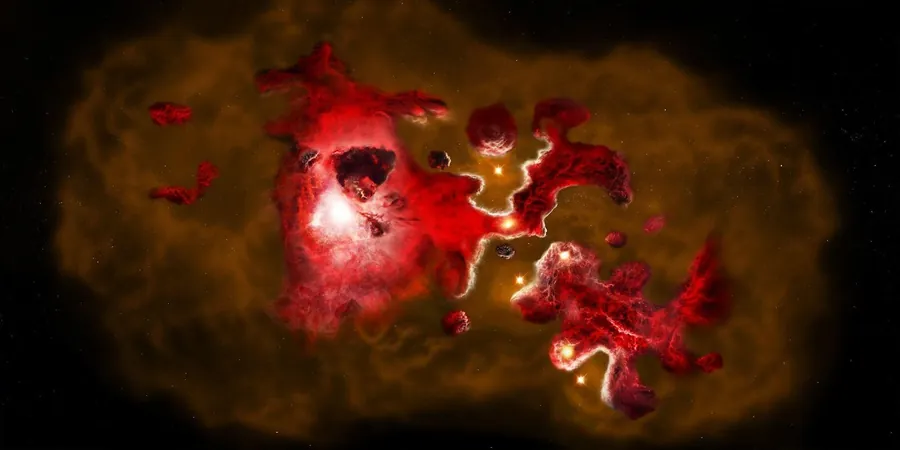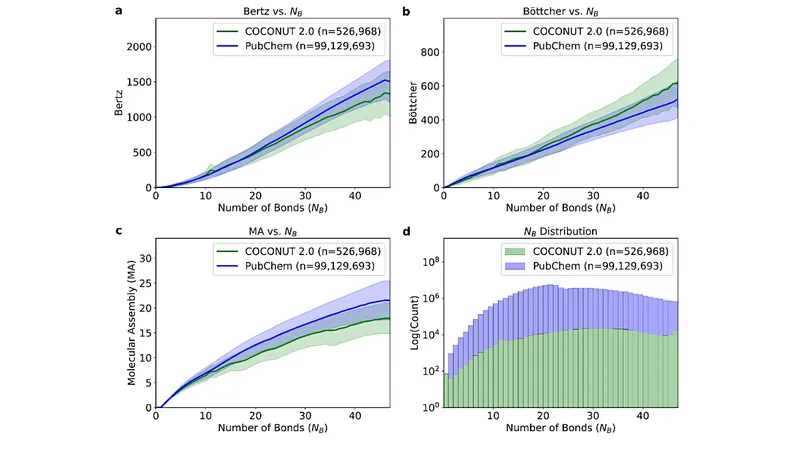
ALMA Unearths Secrets of the Universe's First Galaxies
2025-07-02
Author: Arjun
Astronomers Unveil the Birth of Galaxies
The Atacama Large Millimeter/submillimeter Array (ALMA) has just made a groundbreaking discovery, allowing astronomers to look back in time and explore the nascent phases of the universe's first galaxies. Through the innovative CRISTAL survey—standing for [CII] Resolved ISM in STar-forming galaxies with ALMA—researchers have identified crucial elements such as cold gas and dust that shaped these galaxies merely one billion years after the Big Bang.
Principal investigator Rodrigo Herrera-Camus from the Universidad de Concepción hailed the survey’s findings, saying, "With ALMA’s unmatched sensitivity and resolution, we can decipher the intricate structures within these ancient galaxies like never before. CRISTAL is shedding light on the formation of early galactic disks and revealing how stars congregated into massive clumps, shaping the galaxies we observe today."
Revolutionary Observations from CRISTAL
The CRISTAL project meticulously examined 39 typical star-forming galaxies that represent the early universe’s predominant population. By utilizing [CII] light—a signature emission from ionized carbon in cold interstellar gas—and combining this with near-infrared images from the James Webb and Hubble Space Telescopes, scientists generated detailed maps of the interstellar medium across these galaxies.
A major revelation highlighted in the study published in Astronomy & Astrophysics is that most observed galaxies demonstrated stellar formation occurring in massive clumps that span thousands of light-years. Some galaxies even displayed rotational signs, pointing to the emergence of disk-like structures akin to today’s spiral galaxies. Additionally, the [CII] emissions often reached far beyond the visible stars, suggesting a trove of cold gas that may fuel future star formation or be blown away by stellar winds.
Early Galaxies: Complex Ecosystems
Co-author Loreto Barcos-Muñoz, an astronomer at the U.S. National Radio Astronomy Observatory (NRAO), emphasized the significance of these findings: "What’s thrilling about CRISTAL is that we’re uncovering early galaxies as intricate ecosystems, not just distant points of light. This project showcases how ALMA can reveal the internal structures of galaxies, providing insight into their evolution, interactions, and star formation processes."
Notable Findings: The Puzzles of CRISTAL-10 and CRISTAL-13
Among the galaxies studied, two stood out remarkably. CRISTAL-13 is characterized by colossal clouds of cosmic dust that obscure light from emerging stars. ALMA detects this light transformed into millimeter wavelengths, unveiling structures invisible to optical or infrared telescopes.
Conversely, CRISTAL-10 poses a mystery; its emission of ionized carbon is unexpectedly faint compared to its infrared brightness, resembling traits of rare, heavily obscured galaxies like Arp 220 in the nearby universe. This anomaly hints at unique conditions or power sources within its interstellar medium.
A Time Capsule into Cosmic Evolution
Sergio Martín, Head of Science Operations at ALMA, remarked, "These observations establish ALMA as a cosmic time machine, enabling us to glimpse the universe's early ages. Initiatives like CRISTAL exemplify the potential of ALMA’s Large Programs to answer significant cosmic questions, delivering the breathtaking depth and resolution accessible only through a premier observatory like ALMA."
By performing the first comprehensive examination of cold gas in early galaxies and correlating it with their stellar and dust components, CRISTAL opens a new era in understanding cosmic history. This groundbreaking survey paves the way for future explorations that could reveal how galaxies evolved from turbulent beginnings into the structured systems visible in our current universe.
Herrera-Camus concluded, "CRISTAL offers a treasure trove of multi-wavelength data that enables us to validate and refine our theories surrounding galaxy evolution. This represents a significant leap towards unraveling how galaxies akin to our Milky Way came to be."




 Brasil (PT)
Brasil (PT)
 Canada (EN)
Canada (EN)
 Chile (ES)
Chile (ES)
 Česko (CS)
Česko (CS)
 대한민국 (KO)
대한민국 (KO)
 España (ES)
España (ES)
 France (FR)
France (FR)
 Hong Kong (EN)
Hong Kong (EN)
 Italia (IT)
Italia (IT)
 日本 (JA)
日本 (JA)
 Magyarország (HU)
Magyarország (HU)
 Norge (NO)
Norge (NO)
 Polska (PL)
Polska (PL)
 Schweiz (DE)
Schweiz (DE)
 Singapore (EN)
Singapore (EN)
 Sverige (SV)
Sverige (SV)
 Suomi (FI)
Suomi (FI)
 Türkiye (TR)
Türkiye (TR)
 الإمارات العربية المتحدة (AR)
الإمارات العربية المتحدة (AR)